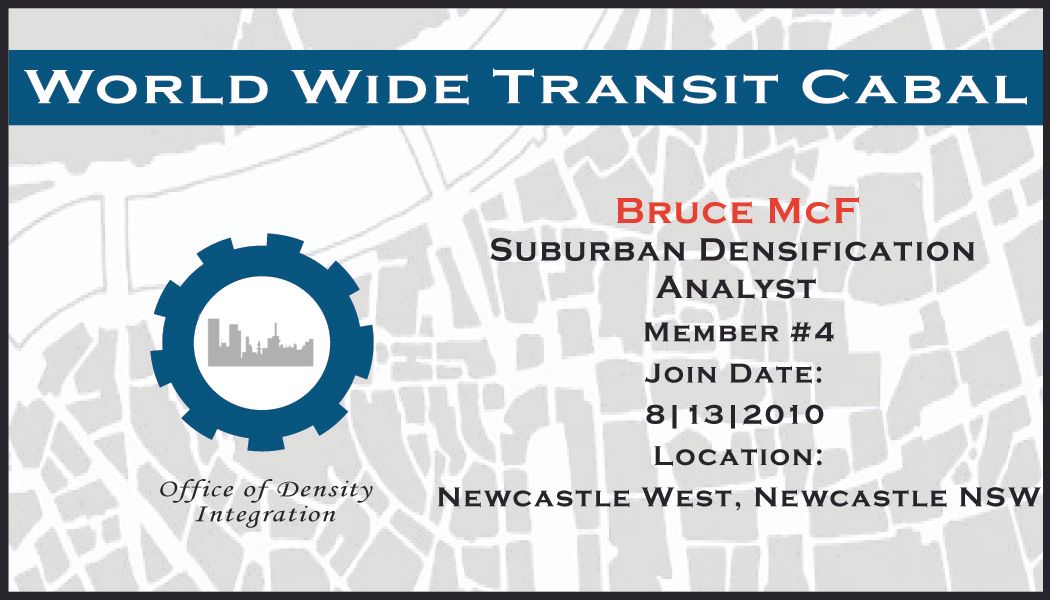To Catch a Train by Robert Cruickshank (California High Speed Rail Blog)
 (Transit Miami)
(Transit Miami)
... for Progressive Populism ... for the Arc of the Sun ... for the Next American Revolution ... for Living Energy Independence ... for a Brawny Recovery ...
for Living as if Life Matters
for a Life as if Living Matters
 (Transit Miami)
(Transit Miami)
 This is "part 2" of A Train Station Grows at Transbay ... Hopefully not a Bonsai (pt. 1)
This is "part 2" of A Train Station Grows at Transbay ... Hopefully not a Bonsai (pt. 1)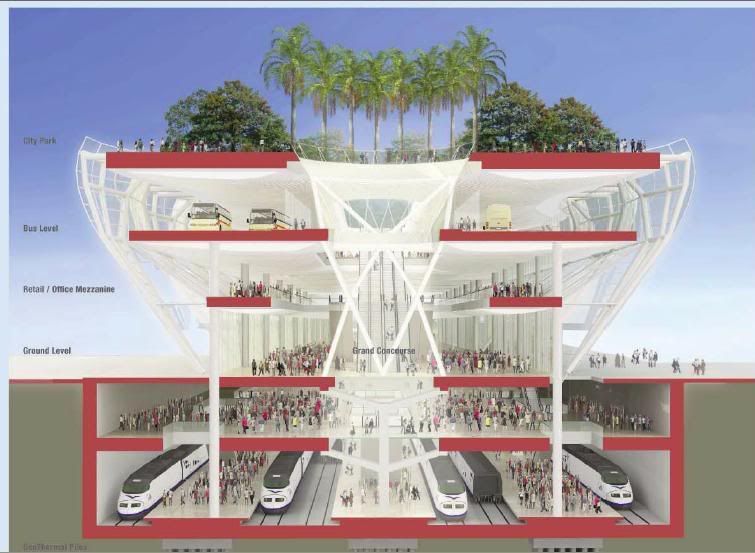 OK, so here's the train box ... where to put two extra platforms?
OK, so here's the train box ... where to put two extra platforms?The dominant pedestrian flows, especially for Caltrain, come from the center of San Francisco, which lies along the flank of the station (unlike traditional European terminals, which are often oriented toward the city center). Vertical access to the station platforms should be oriented perpendicular to the station, towards Market Street, to make use of the inherent horizontal reach of stairs and escalators to bring passengers closer to their destinations. Funneling all passengers through a grand entrance, concourse, fare gate, etc., all along the skinny axis of the building, while perhaps architecturally spectacular, does nothing for passenger throughput. Caltrain monthly pass holders need to get from the street to the platform, pronto, without any scenic detours.
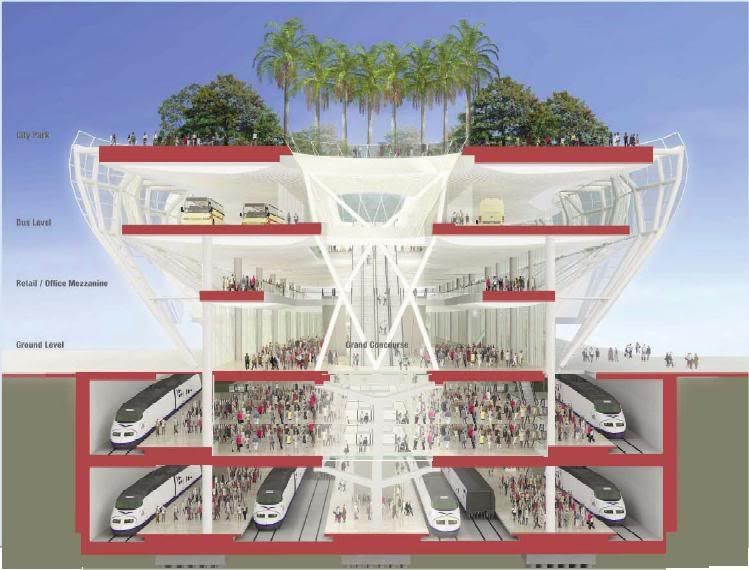
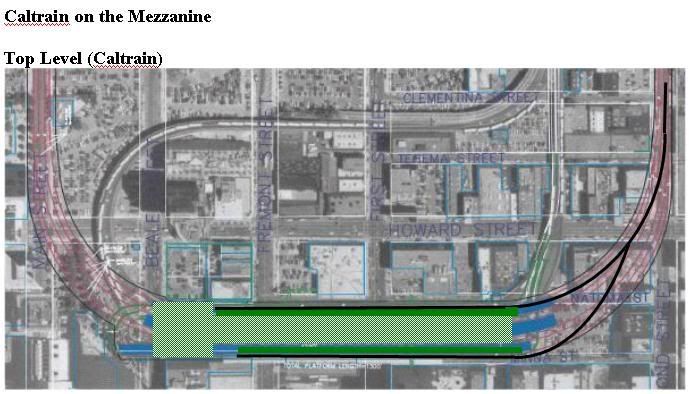
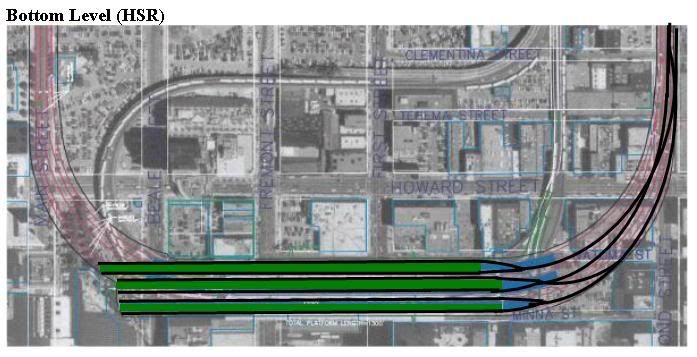
 The "Two by Four" option tries to economize on the cost of digging deeper by narrowing the box ... instead of "Two by Six", six platform tracks at three island platforms, duplicated on two levels, four platform tracks at two side platforms and one island platform, duplicated on two levels.
The "Two by Four" option tries to economize on the cost of digging deeper by narrowing the box ... instead of "Two by Six", six platform tracks at three island platforms, duplicated on two levels, four platform tracks at two side platforms and one island platform, duplicated on two levels.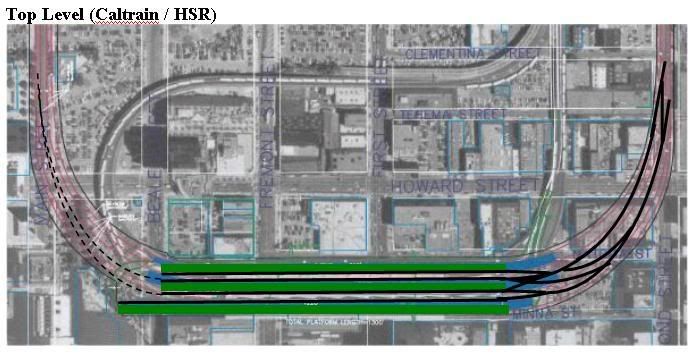
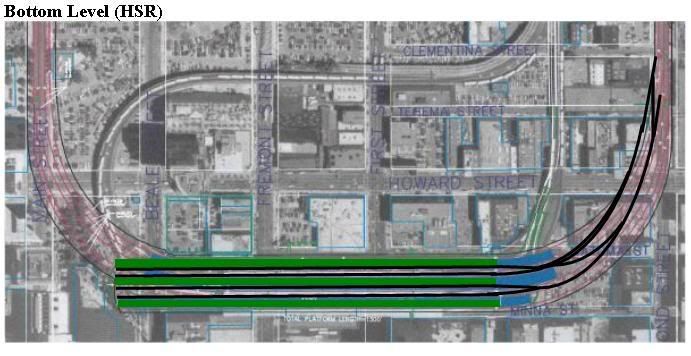
| :00 | :03 | :06 | :09 | :12 | :15 | :18 | :21 | :24 | :27 |
| C#1 | H#1 | C#2 | H#2 | free | C#3 | H#3 | C#4 | H#4 | free |
| :30 | :33 | :36 | :39 | :42 | :45 | :48 | :51 | :54 | :57 |
| C#5 | H#5 | C#6 | H#6 | free | C#7 | H#7 | C#8 | H#8 | free |
Oversized DTX Tunnel. Despite the high level of train traffic, a simple two-track tunnel into the station would do just fine. Because trains are limited to the same homogeneous speed by the sharp curves, a two-track tunnel could easily support 15 to 20 trains per hour, each way, or far more than the terminal could feasibly handle. The third track makes the tunnel needlessly expensive, and requires fancy construction techniques like the New Austrian Tunneling Method (NATM).
While curve radii at the location of the TTC itself are dictated by the street grid and surrounding building foundations, the two curves in the DTX tunnel approach (to turn from 7th onto Townsend and from Townsend onto 2nd) are much sharper than they need to be, and beyond the capability of some off-the-shelf high speed trains. High speed trains aren't MUNI street cars and won't turn on a dime; they are longitudinally stiff to provide good stability at high speeds.
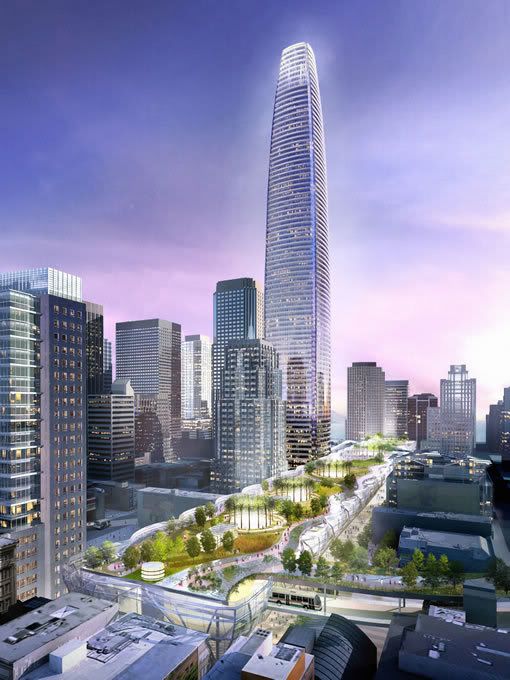 Crossposted at Progressive Blue, Docudharma, The European Tribune, and soon at Agent Orange.
Crossposted at Progressive Blue, Docudharma, The European Tribune, and soon at Agent Orange.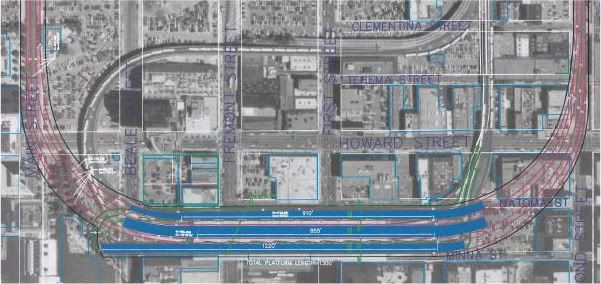
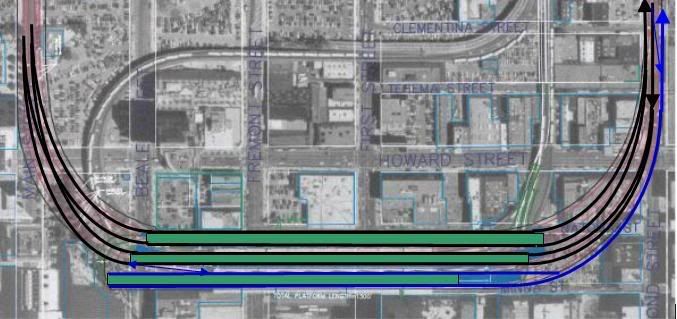
My take on all this madness
What's happening here is the collision of several realities:
1. You had institutions, who years if not decades, believing the hype they built themselves to sell to their clients. ...
2. That you can't simply create your own damn financial instrument to meet a client's needs. ...
3. Derivatives products work when they are designed well and implemented on a regulated environment. ...
4. Many of these items will never be liquid. This brings us to today. The reality of the situation is that we now have to be discriminating between those derivatives that are somewhat liquid and those that aren't. The former can have mark to market, but there needs to be a proper exchange for these things. Both the CME and ICE are going to have such a thing, and these banks should be made to trade them on it to get these things off their books. As for the iliquid ones, well unless our goal is to bankrupt these banks in some attempt to punish them, we will have to facilitate either a suspension of FASB 157 for these or some hybrid. ...
5. Banks holding on to these illiquid derivative step children, that must be re-engineered, will have to realize they won't get all their money back. ...
6. Lastly, new accounting rules and financial regulations must be in place to keep in check the establishment of new positions. ...
The goal is to have a functioning banking system ...
... composed of banking operations each of which have a balance sheet that enables it to raise funds if a credit-worth borrower walks through its doors.
Regarding bankruptcy:As for the iliquid ones, well unless our goal is to bankrupt these banks in some attempt to punish them, we will have to facilitate either a suspension of FASB 157 for these or some hybrid.
... having those banking operations is of far more important to the economy than the identify of those operations. If given money center banks are in reality insolvent, and need a fiction to avoid bankruptcy, then what we need rather than a fiction is a process for reconstituting a functioning, soundly financed banking operation from out of that mess.
Given those sound banking operations, we can leave the original shareholders and bondholders to sort out the mess under normal bankruptcy proceedings.
Few of the sins of the father,
are visited upon the son
Hearts have been hard,
our hands have been clenched in a fist too long
Our sons will never be soldiers,
our daughters will never need guns
These are the years between
These are the years that were hard fought and won
Contracts torn at the edges,
old signatures stained with tears
Seasons of war and peace,
these should not be forgotten years
Still it aches like tetanus,
it reeks of politics
How many dreams remain?
this is a feeling too strong to contain
 The problem with the "Good Bank / Bad Bank" (see also Dr. Seuss version) plan is, of course, ... {drum roll}
The problem with the "Good Bank / Bad Bank" (see also Dr. Seuss version) plan is, of course, ... {drum roll} The good is the clearing up the mess, establishing going concerns that can lend when consumers and small and medium business demand for credit begins to ride, and the restoration of confidence in the banking system.
The good is the clearing up the mess, establishing going concerns that can lend when consumers and small and medium business demand for credit begins to ride, and the restoration of confidence in the banking system. Courtesy of Matthew Yglesias:
Courtesy of Matthew Yglesias:Reader A.M. wants answers I can’t really provide:
We should recapitalize the banks with printed money.
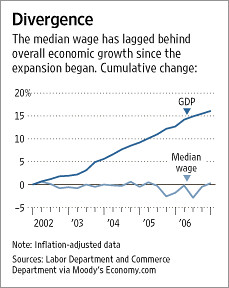
As part of a two-year, $7.5 billion proposed budget, Ohio plans to continue developing passenger rail service connecting four cities Cleveland, Columbus, Dayton and Cincinnati (DispatchPolitics) - and possibly including a link to Toledo. Rail advocacy group All Aboard Ohio supports the so-called "3-C" plan and describes it here."
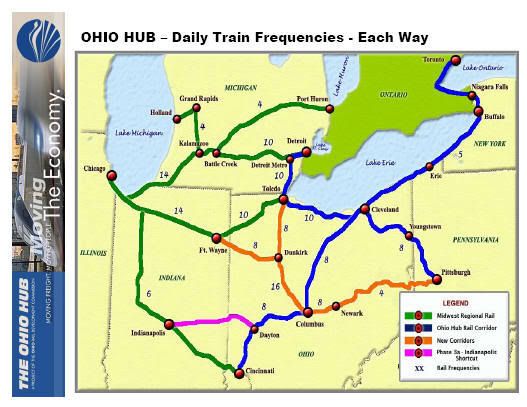
The rail element of the budget did not sit as well with some state representatives. Until Amtrak completes a study of potential ridership and revenue this summer, state officials don't know how much the train system would cost.
"I'm not saying that I'm opposed to passenger rail, but show me the numbers," said Rep. Cheryl L. Grossman, R-Grove City."
